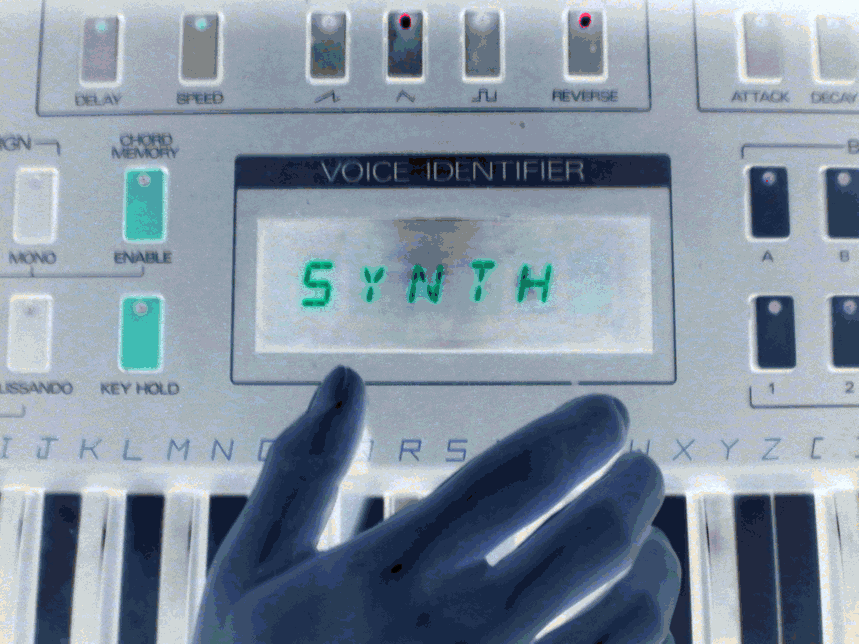
YAMAHA HAVE ALWAYS been at the forefront of the development of effects processors. From fully professional reverb units like the REV 1, down to the popular multi-effects unit, the SPX90, their presence has always been felt – or heard. The only possible hole in their operation is at the budget end of the market. True, the REX50 added overdrive characteristics to their range but it was a budget sound at a budget price. The current vogue is for units which offer four or five effects at the same time, complete with some degree of sound quality. Well, we need wait no longer for Yamaha to respond because the FX500 is now ready to take its place in the music shops.
DESCRIPTION
AND A SMALL place that will be, as Yamaha have decided to go for a 1U-high half-width rack unit, plastic encased with an external power supply.
The basis of the FX500 is that it has five “modules” available, namely; Compressor, Distortion, Equaliser, Modulation and Reverb. The last of these encompasses both reverb and delay and so has various options for these effects including the order in which they occur. More of this later. Quality? 20Hz-20kHz quoted bandwidth with 16-bit resolution and a sampling rate of 44.1kHz is now becoming the norm, but let’s not get blasé about it. At this price such characteristics are impressive. Memory-wise, there are 60 presets and 30 for you to program.
The front panel is pretty self-explanatory. The rear has a single input (the front panel input takes precedence) and two outputs with a flick switch for level, -10 or -20dB. A rather odd choice this, because it makes the unit a little difficult to match up with any equipment intended for use with the professional level of +4dB. Headphones socket and level control (nice touch), MIDI In and two footswitch sockets for bypass and memory change/trigger complete the line-up.
INDIVIDUAL EFFECTS
EACH EFFECT HAS various programmable parameters pertaining to its nature, and an output level to set the overall gain for each stage. As there is only a single input, the first three effects are mono.
The Compressor has parameters for Threshold (-6OdB-OdB), Compression Ratio (1:2, 4, 8 and limit) and Attack Time (1 to 20 milliseconds).
The Distortion has variable Amount which also increases the volume, Trigger – an expander noise gate – (threshold between -80 and -30dB), and LowPass Filter (thru or 400Hz to 16kHz).
“The FX500 boasts four types of basic reverb with reverb times of up to 40 seconds, High Frequency roll off and a pre-delay of up to 335 milliseconds.”
The Equaliser operates in three bands. The High and Low are of the shelving type with variable cut/boost of -15/+15dB while the Mid band sweeps between 400 and 6300Hz with gain of -40/+15dB.
The Modulation comes in four types: Flange, Symphonic, Tremolo and Chorus. Each has variable oscillator Speed (0.1-20Hz), Depth and Mix between incoming signal and effect. Parameters specifically associated with each effect are also included. For instance, the Flanger has Feedback, while the Chorus has both Pitch and Amplitude Modulation. Everything you would expect from a complete multi-effect unit. The Reverb section is most impressive. There are seven choices, the first of which is Reverb(!). Four types of basic reverb (Hall, Room, Vocal and Plate) with reverb time up to 40 seconds, High Frequency roll off and a pre-delay of up to 335 milliseconds. Other manufacturers should pay attention to this because pre-delays are imperative for the accurate setting up of that first reflection and the times existing in many units are nothing short of useless. Next follows Early Reflection with Hall, Random, Reverse and Plate being the options, again with up to 400 milliseconds for the predelay. Delay (up to 740 milliseconds per side) and Echo (up to 370 milliseconds) each have Feedback and Left/Right balance while Reverb + Delay combines the best of both worlds. Finally, the option of whether the Reverb feeds into the Delay or vice versa. Comprehensive, or what?
A quick glance at the front panel shows that there are LED’s above each of the effects and that the Modulation and Reverb modules can be changed around in order. This is particularly helpful as they are dealing with stereo effect.
EDITING PARAMETERS
WITH ANY MULTI-EFFECTS unit, ease of programming is important. Starting from a preset close to the required effect, how easy is it to achieve the necessary result? Judge for yourself. After selecting one of the current memories, the LED’s above each effect will either light up to show that effect is in use or not. The buttons below each effect’s name are toggle switches and by holding down the Parameter button at the same time as pressing one of these, edit mode is entered for this effect. Further pressing of this effect button at this stage effectively causes the effect to be played solo or in line as part of the overall setting. Once in edit mode, the Memory and Parameter buttons double as cursor keys to allow for movement across each page with the effect button moving through the various pages of parameters for each effect (three maximum) and the up/down arrow keys change the value of the selected parameter. Then press another effect, either leaving the previous one in line or “muting” it, and continue on your way. The result can be stored at any point. A piece of cake.
MIDI FUNCTIONS
OVER THE LAST couple of years, MIDI in the context of effects units has evolved through simple patch changing to the situation where MIDI controllers can alter the values of parameters. The FX500 has a program change table which allows you to set up which memory location is called from a MIDI patch change command and also has the capability of allowing any two of 28 listed parameters to have their values changed by MIDI information. MIDI controllers 0 to 31 (continuous), 64 to 95 (switches) and 102 to 120 (undefined) can all be used, as can the note on/off velocity and channel pressure (aftertouch). For instance, the distortion amount could be controlled via a foot pedal sending out portamento time (MIDI controller No. 5) and to this end the Anatek Pocket Pedal (reviewed last month) would be invaluable as it can inject two extra MIDI controllers into the MIDI system. The range of the pedal can also be set so that full movement will only result in the chosen value changing within specified limits.
MIDI aside, one of the footswitch sockets on the rear panel has a dual identity. It can either act as an increment/decrement switch for memory numbers or can set up the delay time by tapping in via a footswitch. I couldn’t test this but would assume that a non-latching pedal would do the job.
“The FX500 is destined to be a best seller, make no mistake – excellent audio sound, easy to use, low noise… the list is practically endless.”
So it would appear that the FX500 has a lot going for it both in the way of effects and facilities. Now, how does it perform?

IN USE
THE ACID TEST for a multi-effect unit has to be the quality of its reverb. Most of the other effects are quite easy to implement, but a good quality reverb usually equates to dosh – loads of it. In this respect the FX500 scores well. There’s a slight flutter when long reverb times are selected, but otherwise it’s pretty well grain free. Another useful test is to check how long delay repeats remain faithful to the original. Again, the FX500 presents no problem. Even when the feedback is increased to the point where the repeats are of the same volume as the original there is still little difference.
How about a guitar on the input? After all, many of you are going to be using this as a replacement for guitar FX pedals. For clean sounds, the FX500 is excellent. That typical sparkle which we have come to expect of Yamaha since the SPX1000 was introduced is certainly evident here and the various modulation effects really made my faithful Strat sing. The compressor tightens up funk chords nicely and is reasonably quiet. Unfortunately the fly in the ointment has to be the distortion which shows characteristics typical of digital fuzz – harsh even when only slightly in evidence, although no glitches as used to occur with the REX50. The low-pass filter is useful for removing the buzz and the expander noise gate keeps things quiet when you stop playing, but overall I felt that this was a letdown.
Distortion apart, I have to admit to being impressed with the FX500. The sound practically glistens as though it’s being passed through an aural exciter, which is most pleasant and cuts through on mixes. The parameters have been well selected and care has been taken with most of the little things – like incorporating the type of reverb with the name of each memory location.) The stereo image created by the modulation effects is also worthy of special mention.
Battery:CR2032
– Unsolder the pins beneath the PCB, you have to unscrew almost everything to accomplish this…
(optional) – Get a battery holder (http://www.ebay.com/itm/Lot-5-Pcs-N…772?pt=LH_DefaultDomain_0&hash=item2a1ee765bc)
Make sure you bend one of the pins in the holder because it will not fit properly in the PCB.
– Solder.
– Place battery.
– Plug the unit to AC and wait a few minutes before turning the unit ON.
– Factory Reset (Hold Comp and Mod + press power button).
– Voilá
http://www.muzines.co.uk/articles/yamaha-fx500-multi-effects/142
https://usa.yamaha.com/files/download/other_assets/4/320544/FX500E.pdf










